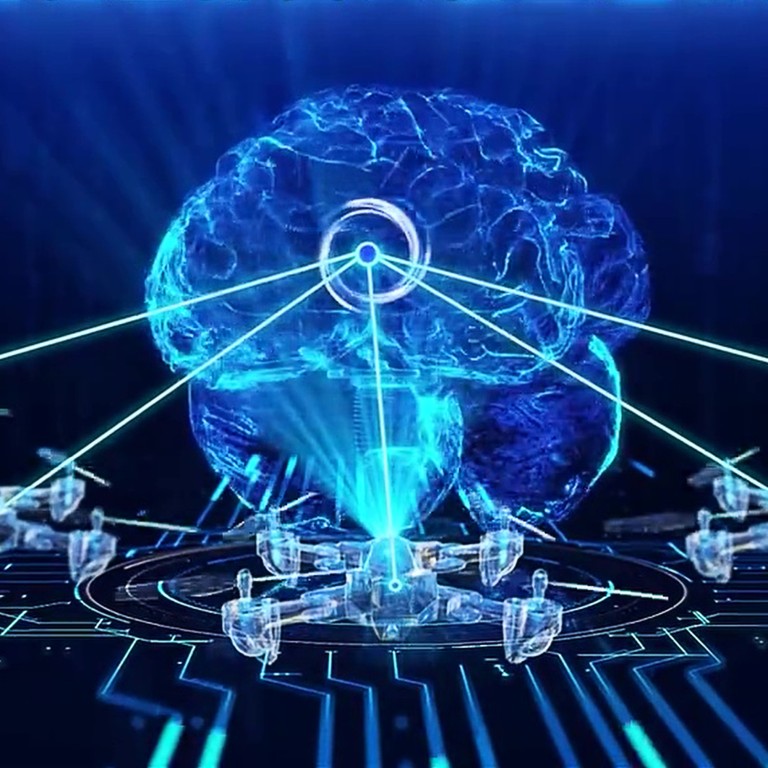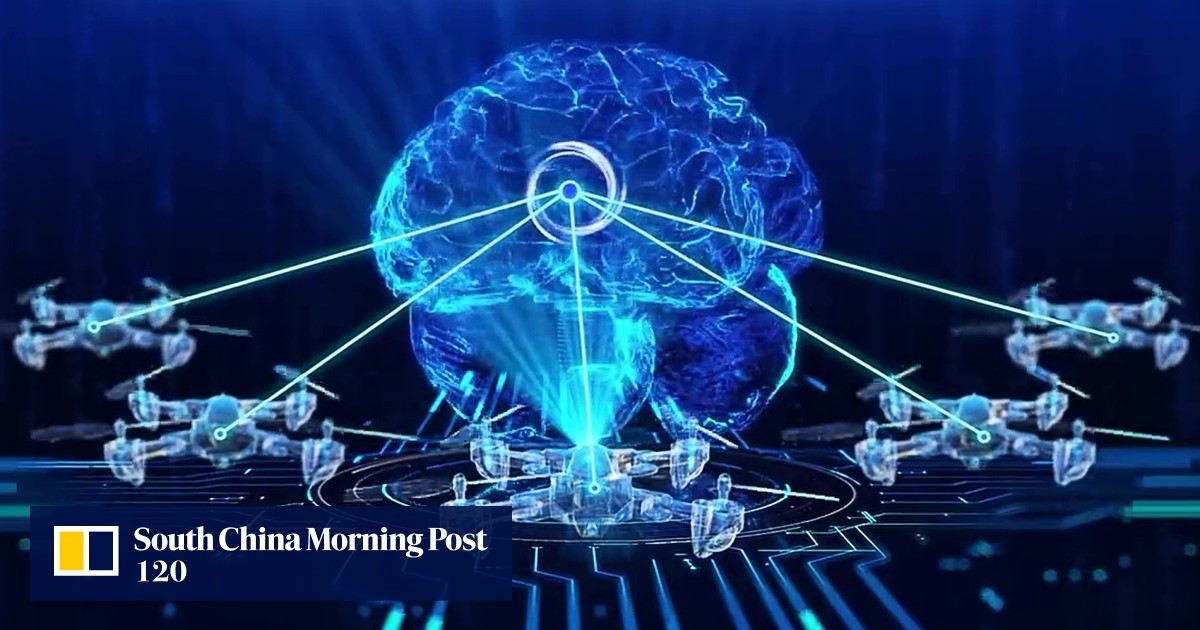onebyone
SENIOR MEMBER

- Joined
- Jul 2, 2014
- Messages
- 7,550
- Reaction score
- -6
- Country
- Location
Chinese team creates drones with ‘human brains’ able to tackle complex tasks through group chats
- Drone swarms shown to talk, collaborate and split up duties using human language, making it easier for operators to understand the machines’ behaviour
- The technology has potential for use in security patrols, rescue operations and aerial logistics and transport, research team says

Communication strategies for drone swarms are typically designed to simulate bee and ant colonies, but the Chinese team has designed swarms with the ability to talk and collaborate like humans. Photo: Li Xuelong
A team of Chinese scientists has developed drones that can engage in “group chats” to discuss and assign tasks among themselves, much like human teams.
The technology could be used to improve security patrols, disaster rescue and aerial logistics, the researchers said.
While communication strategies for drone swarms are typically designed to simulate bee and ant colonies, the Chinese team designed swarms with the ability to talk and collaborate like humans.
Drone group chats also help make the machines’ thinking transparent to humans, allowing researchers to better understand their behaviour.
The technology comes from Li Xuelong and his team at the School of Artificial Intelligence, Optics and Electronics at Northwestern Polytechnical University in Shaanxi province.
The research brings large language models like ChatGPT “to life”, integrating them into practical applications, according to a WeChat post from the university’s official account.

After finding a set of lost keys in a park, a drone sends a photo to the group chat and asks the human operator to confirm before retrieving the item. Photo: Li Xuelong
The post included a demonstration video from the researchers, showing how a team of five drones successfully located a set of keys in an outdoor park.
“The drones showcased key abilities, including humanlike dialogue interaction, proactive environmental awareness and autonomous entity control,” the WeChat report said. Autonomous entity control refers to the drone cluster’s ability to adjust flight status in real time based on environmental feedback.
The technology equips each drone with a “human brain”, allowing them to chat with each other using natural language. This ability was developed based on a Chinese open-source large language model called InternLM, according to the report.
The capacity for dialogue enables both operators and drones to communicate in human language, breaking down barriers between humans and machines.
In the key-finding experiment, after a user tasked the drones with the search, three of them promptly “volunteered” their search abilities while two others, equipped with grippers, told the group they could retrieve the keys. The division of tasks was independently decided by the drone cluster.
Once the keys were found, the drones also shared images with the user via the group chat for confirmation. “This level of dialogue at crucial points significantly improves the stability and safety in executing complex tasks,” the report said.
Equipped with multiple sensors and algorithms for low-altitude search, dynamic obstacle avoidance and visual positioning, the drones are designed to perceive their surroundings from different angles and positions, enabling them to collect data and execute tasks efficiently.
These abilities are referred to as proactive environmental awareness, which allows them to understand and adapt to their surroundings.
Each of the four drones was assigned a specific area to search. As they looked for the keys, the drones coordinated their movements to cover these areas efficiently. They generated a simplified map of the terrain to guide their efforts, and were also able to identify and avoid human operators in their path, ensuring safer flights.
The report noted that the technology has potential for use in security inspections, disaster relief and drone-based transport and logistics.
Previously, Li’s team explored optics-driven drones that use high-energy lasers for remote power supply, providing them with potentially limitless endurance.
In October, Li spearheaded the development of an underwater drone guidance system named Navigator.

Chinese drones with ‘human brains’ tackle complex tasks through group chats
The technology has potential for use in security patrols, disaster rescue operations and aerial logistics and transport, research team says.
